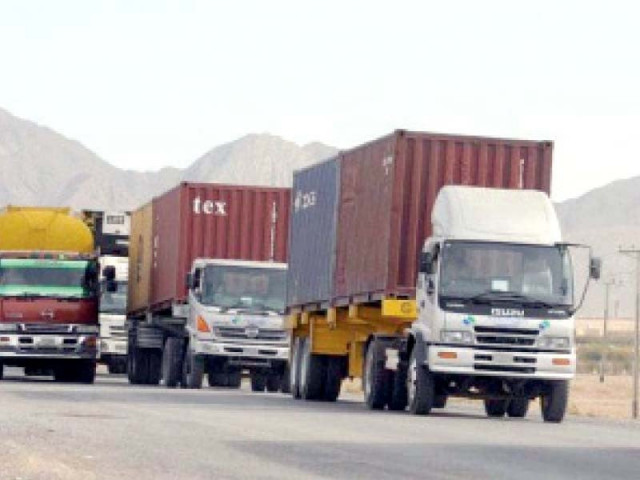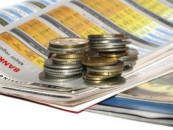Is barter trade a game changer
It must be complemented by measures like opening new routes, FTAs

There is a lot of optimism in the press that the recent decision to allow barter trade with neighbouring and other countries, ie, Afghanistan, Iran, and Russia, would ease Pakistan’s difficulties in meeting its energy import bill and also boost exports. Some call it a “game changer”.
Are such estimates grounded in reality, or are we daydreaming? Has barter trade worked in any other situation in modern times?
It is a fact that the three countries with which Pakistan is planning barter trade are among the most sanctioned nations. They are forbidden to use the US dollar, which is not only the world’s principal reserve currency but also the most widely used currency for international trade.
While many world leaders, including those of BRICS (Brazil, Russia, India, China and South Africa) and Southeast Asian nations, have been pushing the need to reduce reliance on the US dollar, it does not seem likely soon. This is even though China is now the largest trading partner for over 120 countries.
Since Iran has been under US sanctions for the longest period of over four decades, it has always sought new ways to trade without using the US currency. It has been able to do so successfully with its neighbouring countries in the Middle East, Central Asia and South and East Asia.
With some, like India, it has been trading through a special rupee-rial mechanism for almost a decade.
Under this procedure, almost half of Iran’s oil money is deposited in rupees in India’s state-run banks (UCO and Industrial Development Bank). Iran uses that money to buy Indian goods such as Basmati rice and sugar.
More recently, Iran has found a major opportunity to expand its trade with Russia, which has already become its fifth largest trade partner.
The two have also increased cooperation in many other fields, especially the defence sector. Last year, Russia became the largest investor with $2.76 billion in investment.
Several new trade routes that had faced long delays are now opening up. These include the International North-South Transport Corridor (INSTC), a trade route spanning 4,500 miles of railroads, highways, and shipping routes via the Caucasus region, which opened in June 2022. Pakistan has an opportunity to link up its CPEC with these new routes.
Pakistan’s trade with all three, particularly with Iran, is well below its potential. Its bilateral trade with Iran, estimated at $2 billion, is about 2% of Iran’s worldwide imports of $53 billion and exports of $41 billion.
Recently, several steps have been taken to improve this situation. These include completing the 100-megawatt Polan-Gabd electricity transmission line to provide energy to Gwadar and the opening of the Mand-Pishin border market, one of the proposed six.
The regulation allowing barter trade specifies several conditions, such as the principle of “import followed by export” and the requirement for a Pakistani trader to net off the value of goods quarterly after the issuance of authorisation.
Any authorisation is valid for only one year, with no extension or carry-forward for the authorised value.
In addition to these conditions, potential traders would face high tariffs on either side. Because of rampant smuggling especially from Iran and Afghanistan, it will not be easy for legal trade to compete.
To successfully operationalise barter trade, especially with Iran, the two countries must expand the scope of their existing Preferential Trade Agreement (PTA), signed in August 2006.
Recently, the leaders of both countries have committed to complete a bilateral Free Trade Agreement (FTA) expeditiously. However, the success of the FTA would depend on its depth and breadth.
So far, Pakistan’s FTAs have been of rather low ambition due to strong opposition from its industry to open up the local market to competition.
If the FTA with Iran is going to be as inconsequential as was the recent one with Turkey, which covered less than 2% of tariff lines, we can forget about barter trade authorisation to be a game changer.
To sum up, unless Pakistan can complement its barter trade regulation with other trade facilitation measures, such as opening new routes and FTAs, this measure may be like any other trade agreements that Pakistan signed with lots of fanfare but no output.
The Economic Cooperation Organisation Trade Agreement (Ecota) and Safta, which have existed for almost 20 years, are two examples of agreements that failed to create any new trade.
The writer is currently serving as an international trade arbitrator. He has previously served as Pakistan’s ambassador to WTO and FAO’s representative to the United Nations at Geneva
Published in The Express Tribune, June 12th, 2023.
Like Business on Facebook, follow @TribuneBiz on Twitter to stay informed and join in the conversation.



















COMMENTS
Comments are moderated and generally will be posted if they are on-topic and not abusive.
For more information, please see our Comments FAQ